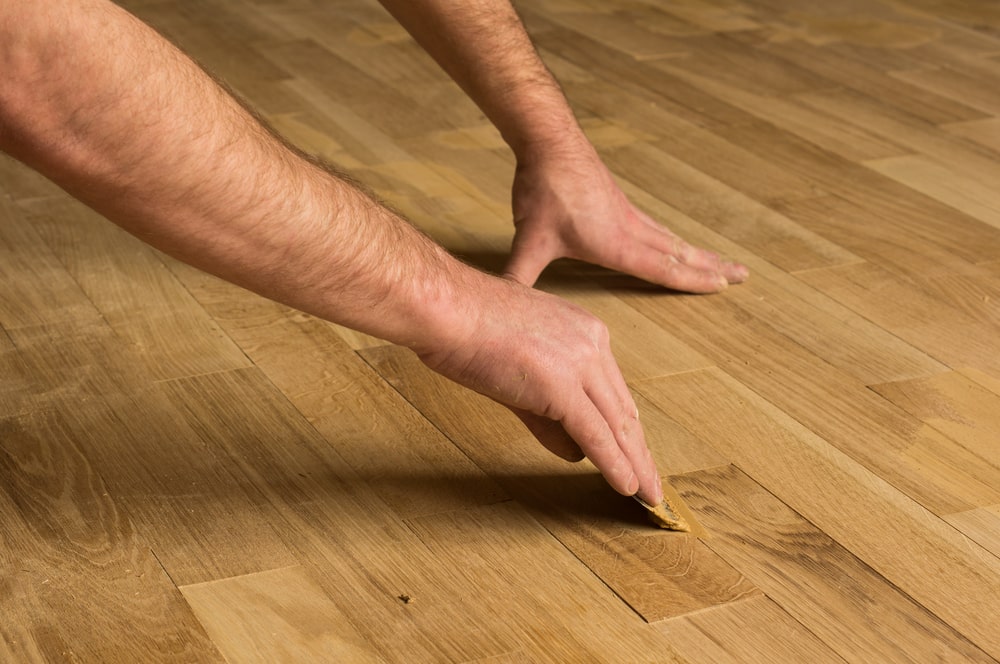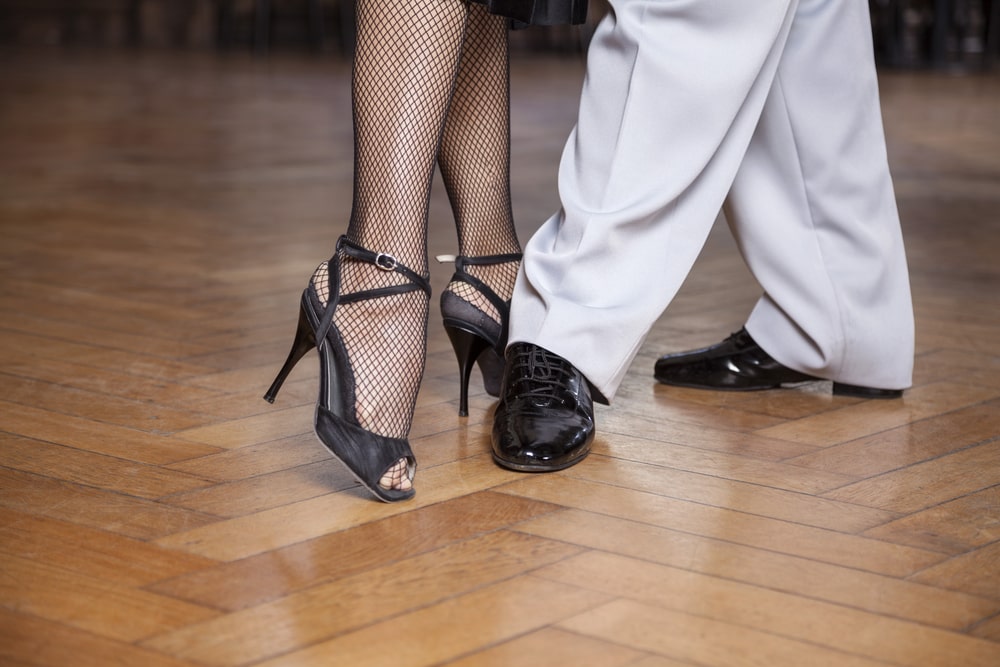
There are 3 main methods to easily fix dents on a hardwood floor: abrasion: using a fine steel wool pad that will gently remove the scratches without damaging the hardwood floor; wood fillers/ putty: if you need to fix gouges; the third method is using water.
Hardwood flooring is known for being more durable and longer-lasting than softwood floors or laminates. However, if you’re not careful and drop a heavy object or move the furniture recklessly, you’ll get dents on your hardwood floor.
Even the sturdiest hardwood floor will get dents. Accidents can happen, and gouges or scratches can appear – especially if there are children or pets at home or when you have to move heavy furniture, or if you’re wearing high heels on a daily basis. No one is to blame here. Just so you know that even in 2022, dents in wood floors are normal.
They are annoying, though, ruining the aesthetics of the hardwood floor, sometimes even undermining the integrity of the whole floor.
Luckily, you can fix hardwood floor dents easily, and here’s a 2022 guide on how to do it. These tips and tricks also apply to engineered wood flooring.
Before Fixing Dents in Hardwood Floors – Assess the Problem
However tough your hardwood floor, you might be surprised how easily dents can occur. Even a bounced baseball or a dropped plate can cause them.
A dent is not the same as a scratch. Scratches happen all the time, even when we don’t see them. For example, your dog’s or cat’s nails on the floor produce scratches. A dent, however, occurs when a heavy object is shoved or dropped on the floor in such a way that it removes a piece of the hardwood material.
So, first, you need to determine if you have a dented wood floor or if you’re dealing with just a few minor scratches. Next, establish how deep the scratches or grooves are and what might have caused them.
If just the uppermost layer of the finish is damaged, then you’re in luck. You’re dealing with a few ugly scratches or dents, and no hardwood material is missing.
Heat and moisture are essential here and can help remove them quickly. To begin with, ensure that the dent is clean and there are no pieces of wood or even splinters missing from your prefinished floor. If there aren’t, go ahead and place a dampened towel over the offending dent.
Then place a steamer on top of this. The wood underneath should, slowly but surely, start rising. Keep dabbing at the wood with the hot steamer until it’s back to the original level and looking as good as new.
Somewhere between 3 and 5 minutes is usually enough to remove dents in the wood. If the cut is too deep to fix this way, you may need to replace the board with a new one.
How to Get Dents out of Hardwood Floors: 3 Main Methods
-
Abrasion
A hardwood floor dent that did not go all the way through the finish can be mechanically abraded. Subsequently, you can recoat the area. It is mostly the same process as polishing your car to get all the scratches out.
Use a fine steel wool pad that will gently remove the scratches without damaging the hardwood floor. If you’re planning on adding a water-based finish afterwards, then you might want to consider a different kind of pad. The steel wool usually leaves some powder behind that will not interact well with the water-based finish.
If we’re talking scratches and not a severe dent in a hardwood floor, then a touch-up stick with the right colour might do the job nicely.
-
How to fix gouges in hardwood floors – wood fillers/ putty
Gouges are more severe than dents. Here, the wood fibres are broken or frayed. A gouge is a terrible sight, making even the best hardwood floor look old and unloved.
To fix a gouge, you will need to fill the offending wound in. Then, go to your local DIY store and pick up some wood filler. The trick here is to find a product that matches the colour of your floor.

Slowly apply the filler to the gouge and then leave to dry. Once dry, you can sand over the patch. For dents in a hardwood floor, you might even want to try filling in the scar with a brown crayon and then wiping away any excess wax.
-
Fix dents in a Hardwood Floor with Water
Slowly, you want to add just the right amount of water to the dent. A pipette or even the head of a matchstick can help you transfer water into the cut.
Don’t be alarmed if the varnish or other finish starts turning blue. This is known as “blushing” and doesn’t harm the integrity of the finish.
Dab away any excess water with a dry cloth and then put a damp folded cloth over the water-filled dent. Press a hot iron onto the fabric. When the material is dry, remove the heat and check the dent.
If the dent is still there, repeat the process. Eventually, the moisture from the cloth will penetrate the fibres of your finished wood, bringing it back to its original shape.
The Last Frontier to Fixing Hardwood Floor Dents
When dents in a hardwood floor can prove too much, you might need to replace the wood boards. If the damage is restricted to one or two of these boards, all the better.
However, when recoating, the difference in sheen levels from the new and old areas will be visible. This is because the “new” wood boards will stand out from the rest.

To fix a dented wood floor often results from high heel use. We recommend you clean the whole area and recoat it entirely.
For more advice on a hardwood floor dent repair or replacing, get in touch with us at ESB Flooring today.
Also for the highest-quality solid wood flooring in the market, you may browse through ESB flooring’s website or visit our largest wood flooring showroom in London.
| Mon-Fri | 8:00AM – 5:00PM |
| Saturday | 10:00AM – 4:00PM |
| Sunday | 11:00AM – 3:00PM |





.svg)
.svg)